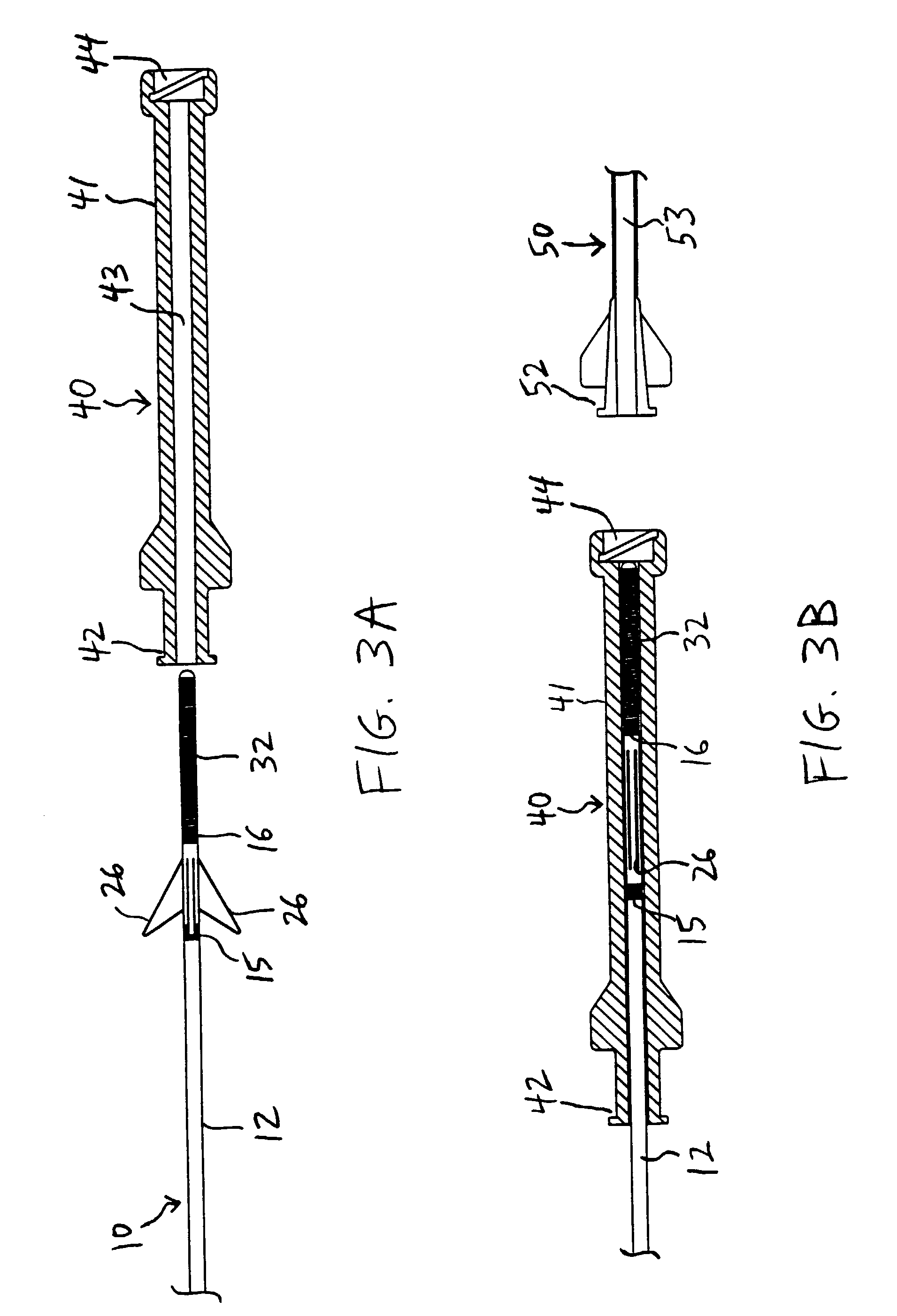Mechanical thrombectomy device for use in cerebral vessels
a thrombosis device and cerebral vein technology, applied in the field of improved apparatus and methods for removing vascular occlusions, can solve the problems of clotting agents, affecting the effect of thrombosis, so as to enhance the effect of retrograde flow and increase the level of retrograde flow
- Summary
- Abstract
- Description
- Claims
- Application Information
AI Technical Summary
Benefits of technology
Problems solved by technology
Method used
Image
Examples
Embodiment Construction
[0033]Referring to FIG. 1, a preferred method for manufacturing a hook-shaped deployable element, for use with a thrombectomy device of the present invention, is described. In FIG. 1A, tubular member 18 having proximal and distal ends 22 and 24 and a lumen extending therebetween is provided and preferably comprises a shape memory material, for example, a nickel-titanium alloy (commonly known in the art as Nitinol). Plurality of longitudinal slits 25 are formed at selected locations about the circumference of tubular member 18 to define at least one deployable element 26. As shown in FIG. 1A, plurality of longitudinal slits 25 preferably are disposed about tubular member 18 so that they do not extend to proximal and distal ends 22 and 24 of tubular member 18.
[0034]When proximal end 22 is advanced distally with respect to distal end 24, and / or distal end 24 is advanced proximally with respect to proximal end 22, deployable element 26 becomes biased radially outward from tubular member...
PUM
 Login to View More
Login to View More Abstract
Description
Claims
Application Information
 Login to View More
Login to View More - R&D
- Intellectual Property
- Life Sciences
- Materials
- Tech Scout
- Unparalleled Data Quality
- Higher Quality Content
- 60% Fewer Hallucinations
Browse by: Latest US Patents, China's latest patents, Technical Efficacy Thesaurus, Application Domain, Technology Topic, Popular Technical Reports.
© 2025 PatSnap. All rights reserved.Legal|Privacy policy|Modern Slavery Act Transparency Statement|Sitemap|About US| Contact US: help@patsnap.com



